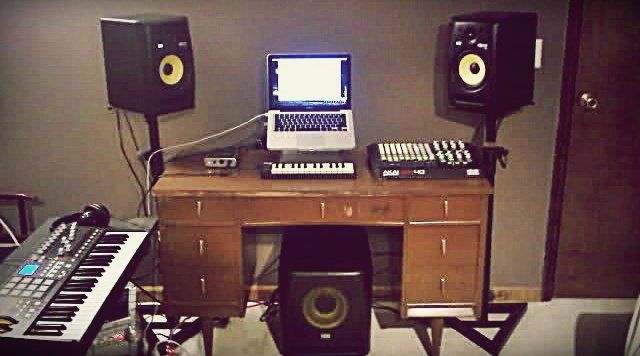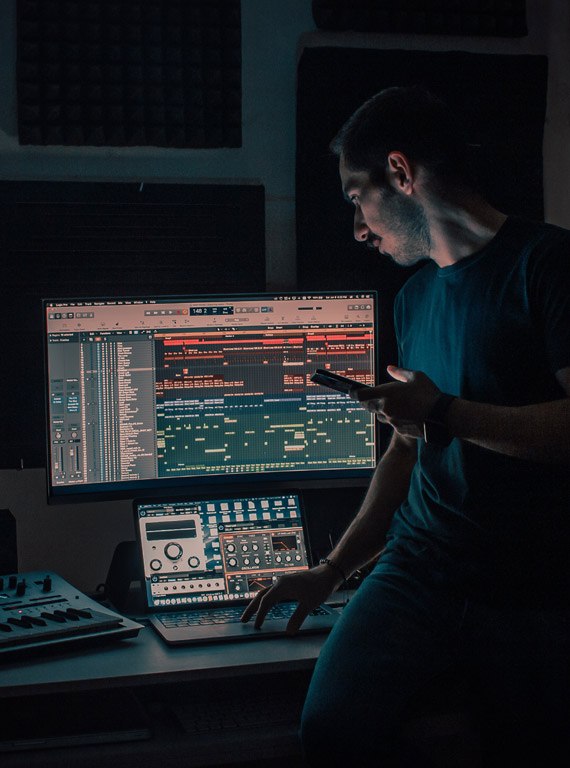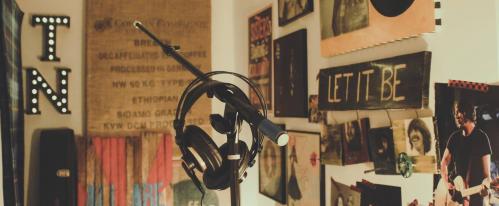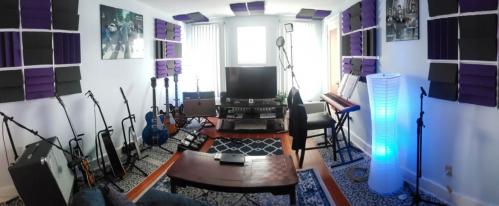Why Do I Need A Subwoofer In My Studio? The benefits of having a sub woofer in your home studio.
A pair of good-quality speakers are essential for any audiophile or music producer - from listening to music to watching films on your home cinema or mixing down a track with professional quality. But one thing some people still fail to realize is that using an additional subwoofer also makes a huge difference - and once you try it, you won't go back!
good subwoofer, such as the KRK 10s, greatly improves your listening experience, by making the audio source sound bigger and more lifelike. The main reason is that most compact speakers - as often used in project studios or home cinemas, for instance - are quite "bass-shy".
Adding a subwoofer fixes this problem and provides you with a better and much richer sound. But that's not all! Even if you happen to own some bigger, professional monitors, by adding a dedicated low-frequency speaker - the sub-woofer - you can dramatically improve your sound, by freeing your main speakers to do what they do best, handling the high and mid-range frequencies. That's why professional recording studios, cinemas and live music venues all use subwoofers.
A subwoofer will help your amplifier and main speakers to work more efficiently, with less distortion, and allow sounds such as vocals and instruments to be heard more cleanly. At a glance, a subwoofer looks similar to an ordinary speaker, but it's very different: it doesn't reproduce high or mid-range frequencies, and are designed differently, to allow for the massive cone movement required by low bass reproduction.
Another great advantage of subwoofers, is that they greatly help with a realistic imaging of the sound: the best room placement of a pair of stereo speakers is usually not the best placement for optimum bass sound. With a subwoofer, then, you can have the best of both worlds, without making compromises - you place it where the bass sounds best, and the main speakers where they'll provide the best possible stereo imaging.
ADDING A SUB TO YOUR CURRENT SETUP
Adding a subwoofer to your current setup does not require updating your other speakers. Subwoofers are made to complement any pair of stereo speakers, and any good sub such as the aforementioned KRK 10s can be used alongside whatever other speakers you may have, regardless of the brand.
It's important to highlight this fact, because some people may think they're not happy with their current sound and think that investing on a new set of stereo monitors is the solution, when in fact what they need is the extra definition and depth only a sub can offer.
If you want a better sound but you know that your stereo monitors are already of good quality, maybe you should look into simply adding a sub to your setup and - presto! - you'll get a much richer sound.
SHOULD YOU USE ONE OR TWO SUBWOOFERS?
In most cases, one subwoofer is enough. In smaller rooms, the human ears can't detect the source of low-frequency sounds (below about 100Hz). But in some situations, driving the room from two points instead of one, two different sets of room modes are excited, which can result in a smoother overall low-frequency balance.
WHERE TO PLACE YOUR SUBWOOFER
Just because bass frequencies are largely non-directional does not mean that you can ignore the subwoofer's placement in the room. In fact, a sub's physical position in the room in relation to the floor, walls and other surfaces radically influences its bass response.
The best subwoofer in the world will sound bad in a room that has a bad acoustic, or if left at a non-adequate place in that room. In a monitoring situation, it is desirable to place the subwoofer so that it produces the smoothest frequency response at the listening position.
In addition, since the subwoofer's output will interact with the other monitor speakers in the room, it is important to consider the subwoofer and near-field speakers as a total system. At this stage, you have only the subwoofer operating.
Once you find its optimum position and settings, you can turn on the complete monitoring system to verify that all components interact properly. What you are attempting to do is find a place in the room where the subwoofer interacts smoothly with the acoustics to even out the bass response at the listening position.
After you find the optimal spot, place the subwoofer there and listen to it from the mix position. Move the subwoofer around a foot at a time until the bass response is as even as possible at the listening position.
Remember that you do not want any Single frequency to be exaggerated during monitoring, as that will result in the final music mix having too little bass. One caveat: if your subwoofer's optimum position is under your console, make sure to leave the removable grill on the subwoofer to protect the speaker from your feet. You do not want to kick a hole in the subwoofer speaker!
Check out the picture below and a complete how to guide on subwoofer placement from KRK HERE.

Use the Features Designed for the Pros - Bypass Footswitch
Professional engineers like the ability to hear how the sub is affecting the mix. Plugin any standard latching 1/4 inch footswitch to bypass the KRK10s and send full range audio to your top monitors. A ground lift feature helps tame pesky ground hum. You will need to use a standard 1/4 inch, mono, latching footswitch. Any standard latching 1/4 inch mono footswitch (such as the Boss FS-5L) should be compatible.




